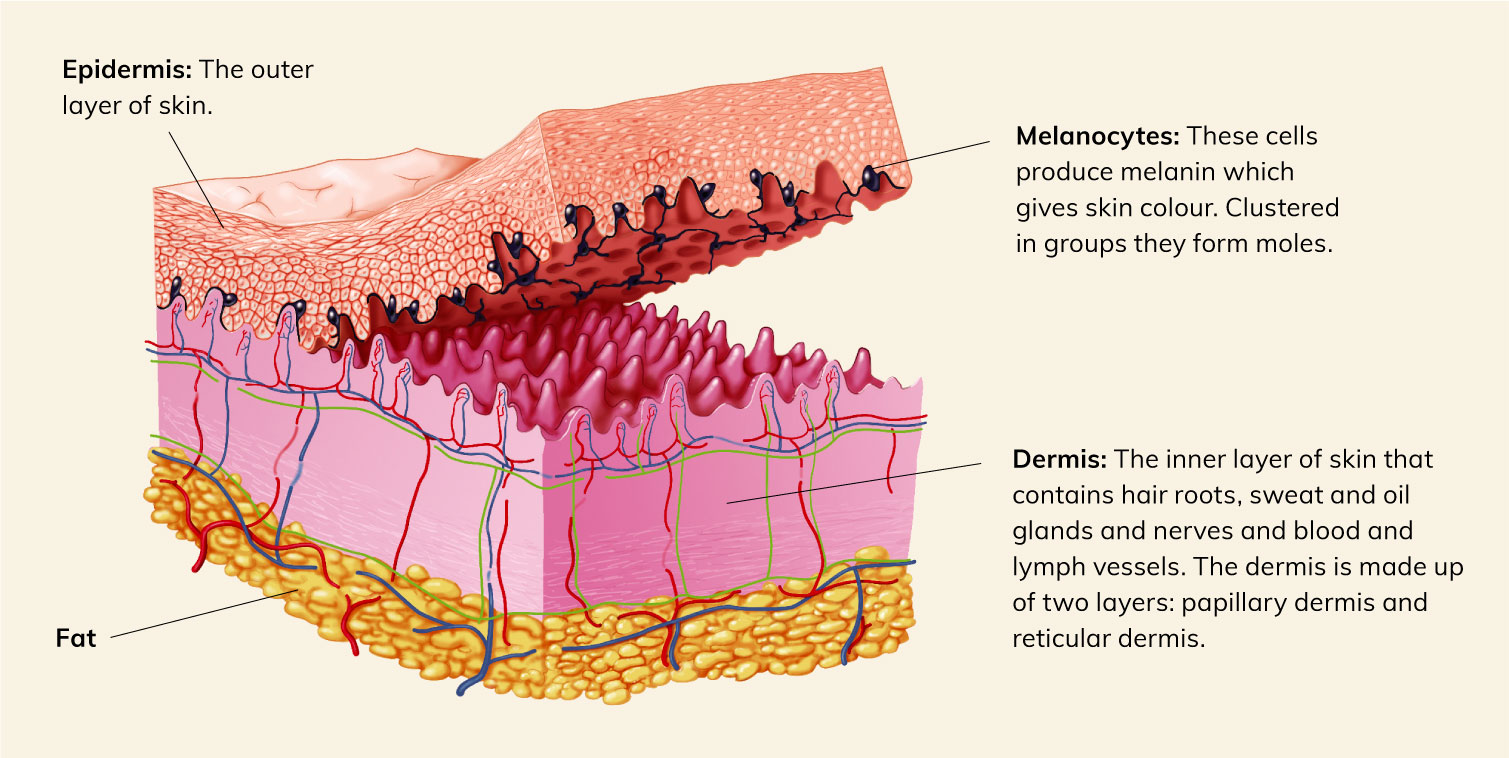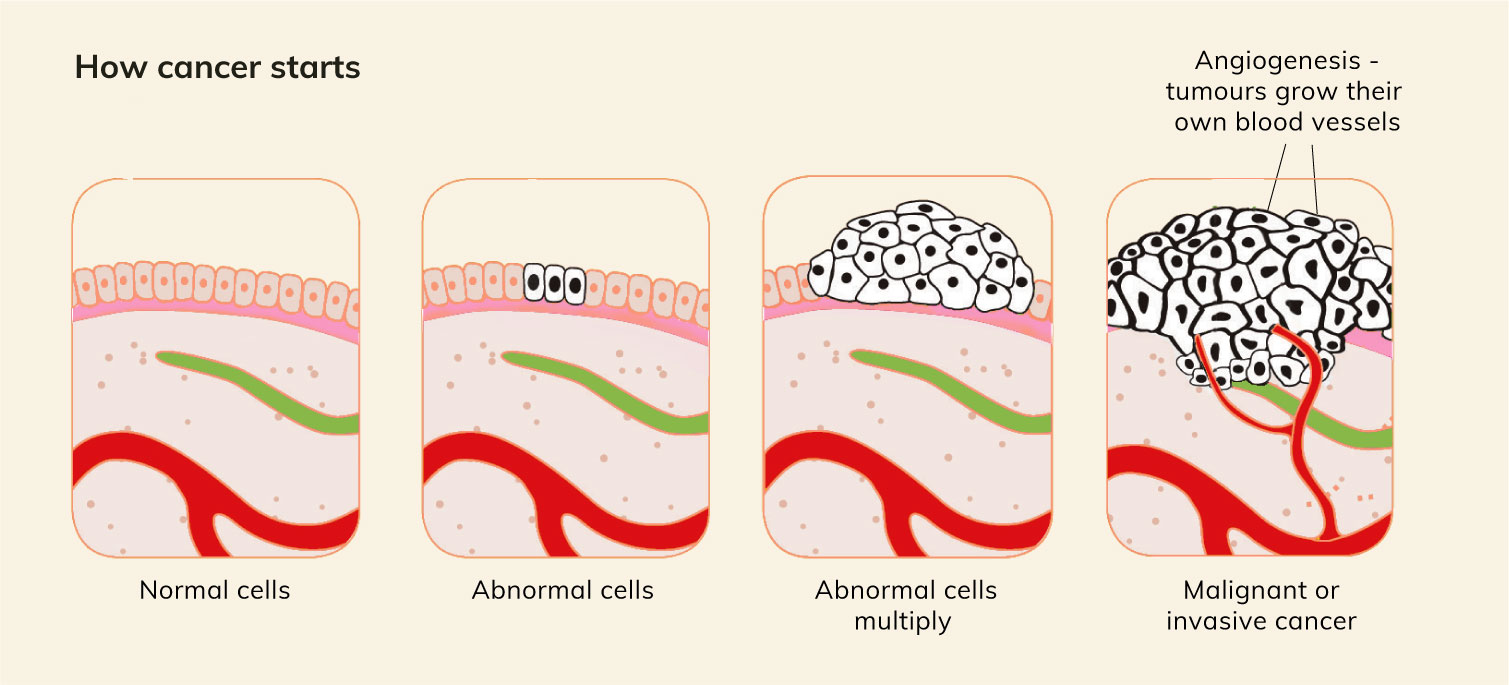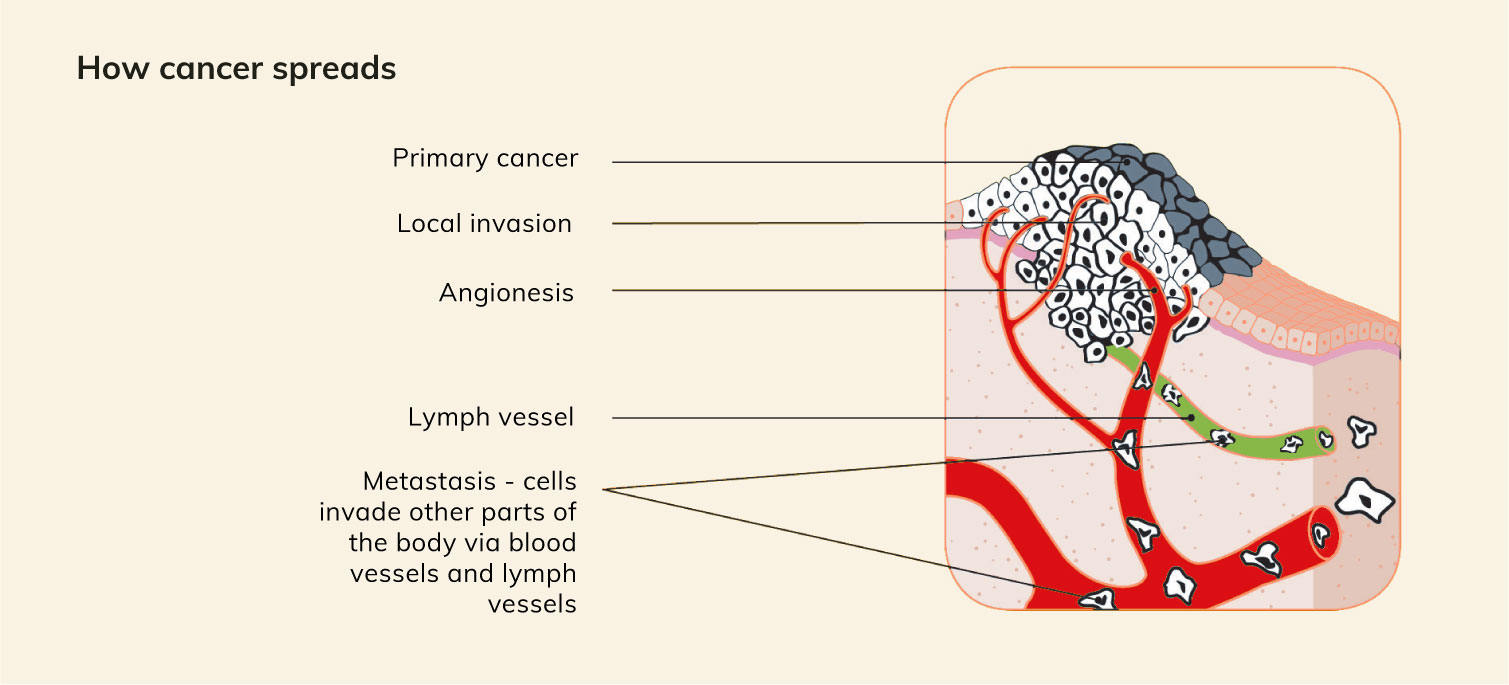Melanoma is the most deadly form of skin cancer. It develops in the skin’s pigment cells, known as melanocytes, and can spread via the blood and lymphatic system to distant organs like the lungs, liver and brain.

Melanocytes produce melanin to help protect the skin from ultraviolet (UV) radiation i.e. sunlight. When these cells cluster together in the skin during childhood or adolescence they form a mole. Melanoma occurs when abnormal melanocytes grow in an uncontrolled way. About a third of all melanomas develop from existing moles, but they can also develop anywhere on the skin.
While melanoma usually begins in the skin (cutaneous melanoma), less commonly it can start in the eye (ocular melanoma) or the moist tissue that lines certain parts of the inside of your body (mucosal melanoma). It can occur anywhere you have melanocytes, even if they are not exposed to sunlight. A primary melanoma is the site of origin of a melanoma.
Melanomas can be black, brown, pink or even skin coloured.
Causes
Over exposure to UV radiation causes 95% of melanomas. Melanoma risk is increased for people who have:
- unprotected sun exposure
- a history of tanning and sunburn, especially during childhood and adolescence
- lots of moles
- atypical moles
- already had a skin cancer, including basal cell carcinoma (BCC) or squamous cell carcinoma (SCC)
- fair skin, red hair, blue eyes or skin that burns easily
- a family history of melanoma, especially if they developed it at a young age (i.e. less than 40)
- certain genetic variations that can be inherited in families.
Check your risk
Although people with fair skin have a higher risk of melanoma, melanoma can affect anyone regardless of skin type, ethnicity, age or gender. Although people with olive skin have a lower risk, the risk of melanoma is still there, especially if they have spent a lot of time in the sun.
Find out your personalised risk of developing melanoma by using our ‘First Primary Melanoma Risk’ calculator at
melanomarisk.org.au
Remember any percentage of melanoma risk means you are at risk of melanoma. Prevention and early detection save lives.
How melanoma spreads
If left undetected, melanoma can spread to the deeper part of your skin (dermis). From there it can enter the lymphatic system or bloodstream and spread to other parts of the body such as the lungs, liver, brain or bones. This spread is called metastasis.


Other skin cancers
There are three main types of skin cancer: basal cell carcinoma (BCC); squamous cell carcinoma (SCC); and melanoma.
- BCC is the most common form of skin cancer. It rarely spreads to other parts of the body and typically develops on parts of the body that have been chronically exposed to the sun, such as the face.
- SCC is the second most common form of skin cancer and is most frequently seen on sun-exposed areas, such as the head, neck and back of the hands, but it is possible to get it on any part of the body, including the inside of the mouth, lips and genitals.
- Melanoma is rarer than BCC and SCC, but is more deadly. If not detected early, it can spread to other organs. Early diagnosis is associated with better outcomes.